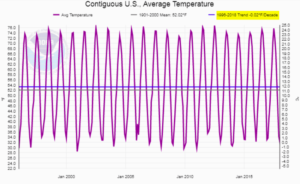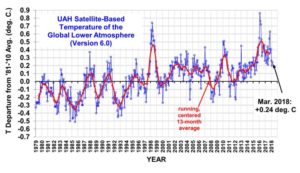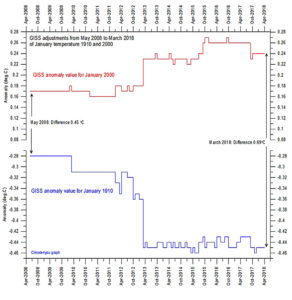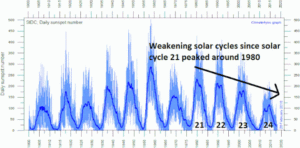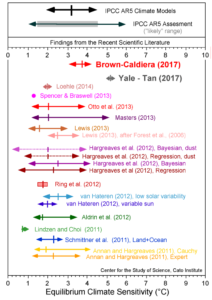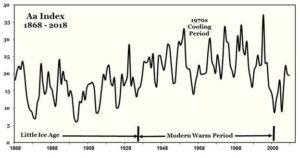by Mark Fife, April 19, 2018 in WUWT
In today’s post I am going to go over how I went about creating a reconstruction of the history of temperature from the GHCN data sets using a variable number of stations reporting each year for the years of 1900 to 2011. Before I go into the details of that reconstruction, let me cover how I went about discarding some alternative methods.
I decided to create a test case for reconstruction methods by picking five random, complete station records. I then deleted a portion of one of those records. I mimicked actual record conditions within the GHCN data so my testing would be realistic. In different trials I deleted all but the last 20 years, all but the first 20 years or some number of years in the middle. I tried normalizing each station to its own average and averaging the anomalies. I tried averaging the four complete stations, then normalizing the fourth station by its average distance from the main average. In all cases when I plotted the reconstruction against the true average the errors were quite large.normalizing the fourth station by its average distance from the main average. In all cases when I plotted the reconstruction against the true average the errors were quite large.

